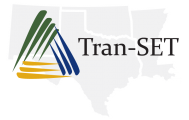Document Type
Data Set
Publication Date
8-2022
Abstract
Early COVID-19 lockdowns in the first half of 2020 largely kept people at home, thereby reducing motor vehicle traffic levels. Theoretically, reduced traffic exposure should have resulted in reduced motor vehicle crashes. However, a variety of factors may have complicated this relationship. In order to better understand the impact of COVID-19 lockdowns on traffic safety outcomes, we explore fatalities, injuries, and total crashes before and during the lockdowns on both the national and state levels. We provide descriptive statistics and create negative binomial regressions exploring the role of vehicle, user, and built environment factors on traffic safety outcomes. Findings suggest that crash counts in Region 6 were 35%-50% lower in 2020 during the COVID-19 lockdowns. Crashes that occurred during the COVID-19 lockdowns were more likely to be more severe. Fatal pedestrian crashes across the U.S. decreased during COVID-19 (although not as much as overall fatal crashes) and fatal bicyclist crash counts increased. Drunk drivers were less prevalent in nationwide fatalities but more prevalent in overall Region 6 crashes. Overall, crashes were more likely single-vehicle fixed-object or rollover crashes involving unsafe speeds. In Texas, suburban areas saw the most crashes before and during COVID-19, although they also saw the greatest decrease. Rural Texas crashes were most likely to result in a fatality or serious injury, and that likelihood got worse during the COVID-19 lockdowns. While Texas freeways and arterials saw the largest decreases in crash counts, these functional classifications still had the most crashes. Urban interstates and rural local roads in Texas were notable because these two functional classifications actually saw increases in the number of fatal and serious injury crashes during COVID-19 lockdowns.
Recommended Citation
Ferenchak, N. N. (2022). COVID-19 and Traffic Safety: Exploring Exposure, Crash Frequency and Severity, and Roadway and Network Design. Retrieved from https://repository.lsu.edu/transet_data/137


Comments
Tran-SET Project: 21SAUNM02